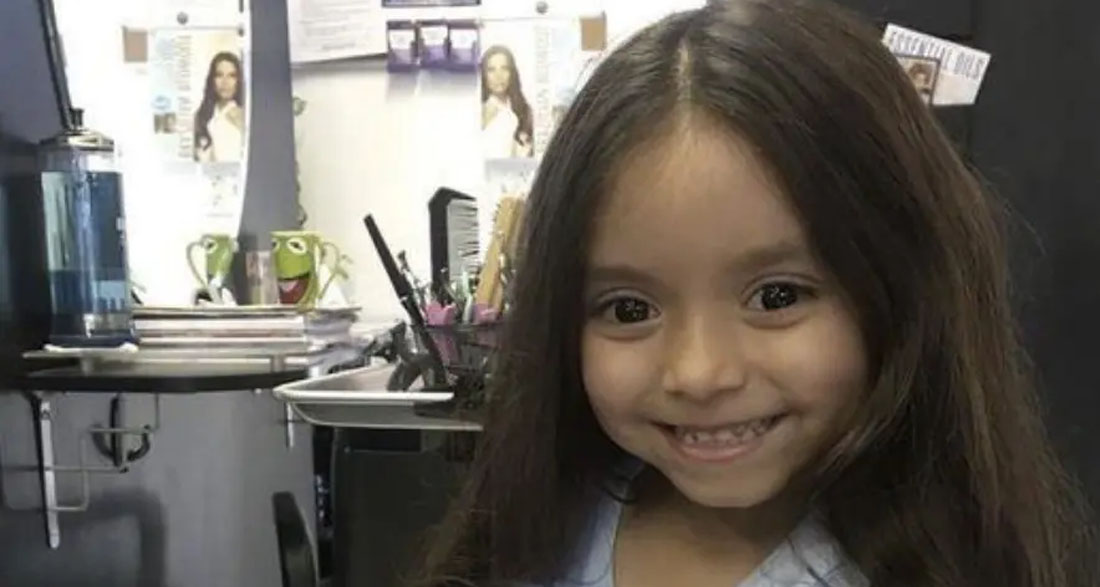A mother brought her eight-year-old daughter to a salon for a back-to-school haircut. The girl was excited, swinging her legs as they waited for their turn. Finally, when the hairdresser called them over, the girl hopped into the chair, ready for a fresh new look.
The hairdresser began by combing through the girl’s long hair. At first, everything seemed normal. But soon, something made her pause. She looked closer, her eyes narrowing. What she saw made her gasp—tiny bugs were crawling everywhere. Thousands of them!
With a sinking feeling, the hairdresser realized the girl’s hair was infested with lice. She immediately walked over to the mother, speaking quietly but firmly. “Ma’am, your daughter has lice. There are so many—I’m really sorry, but I can’t cut her hair like this.”
The mother glanced up from her phone, barely phased. “Oh, yeah,” she said with a shrug. “I know. I’ve seen them, but I wasn’t sure how to get rid of them. I didn’t think it was a big deal.”
The hairdresser’s mouth dropped open. “Not a big deal?” she thought. She had never heard such a relaxed response to something like this. Lice weren’t just gross—they could spread to others, especially with school starting soon.
“It is a big deal,” the hairdresser said, trying to stay calm. “Lice spread so quickly, especially with kids being in close contact at school. You really need to treat this before she’s around other children.”
The mother only nodded, not seeming very concerned. But the hairdresser couldn’t shake the encounter. She realized that some parents didn’t understand just how serious lice infestations could be. After the mother and daughter left, she decided to share the story to raise awareness.
Lice aren’t just an annoyance—they can lead to bigger problems if they’re not treated. They spread easily through close contact, like when kids hug or play together. Even sharing things like hats, hairbrushes, or pillows can pass lice from one person to another. That’s why it’s so important to take care of it immediately, especially in schools.
If you find lice in your child’s hair or even in your own, don’t panic—there are many ways to treat them. Over-the-counter lice shampoos can help, and if you’re unsure, you can always ask a doctor for advice. But whatever you do, act quickly so they don’t spread to others.
Here are some signs of lice to watch out for:
- Severe itching: Lice bites can cause intense itching on the scalp, body, or even the genital area.
- Feeling something moving: Some people say it feels like there’s something crawling in their hair. This can be a sign of lice moving around.
- Spotting lice: You might see the lice themselves on the scalp, in the hair, or even on clothes. They’re usually about the size of a sesame seed, but sometimes they can be a bit bigger.
- Finding nits: These are lice eggs, and they’re small, round, and stick to the hair, especially near the ears or the back of the neck. Nits are often confused with dandruff, but unlike dandruff, they’re hard to brush out.
- Red bumps: If someone scratches too much, it can lead to red bumps on the scalp, neck, and shoulders. In some cases, these bumps can even get infected if the skin is broken.
- Bite marks: Lice don’t just live on the scalp—they can leave bite marks on the body too, especially in areas like the groin, upper thighs, waist, or around the pelvis.
By sharing her experience, the hairdresser hoped to remind parents how easily lice can spread and how important it is to treat them right away. She wanted to make sure no other kids—or parents—had to go through what she had just seen in the salon that day.

